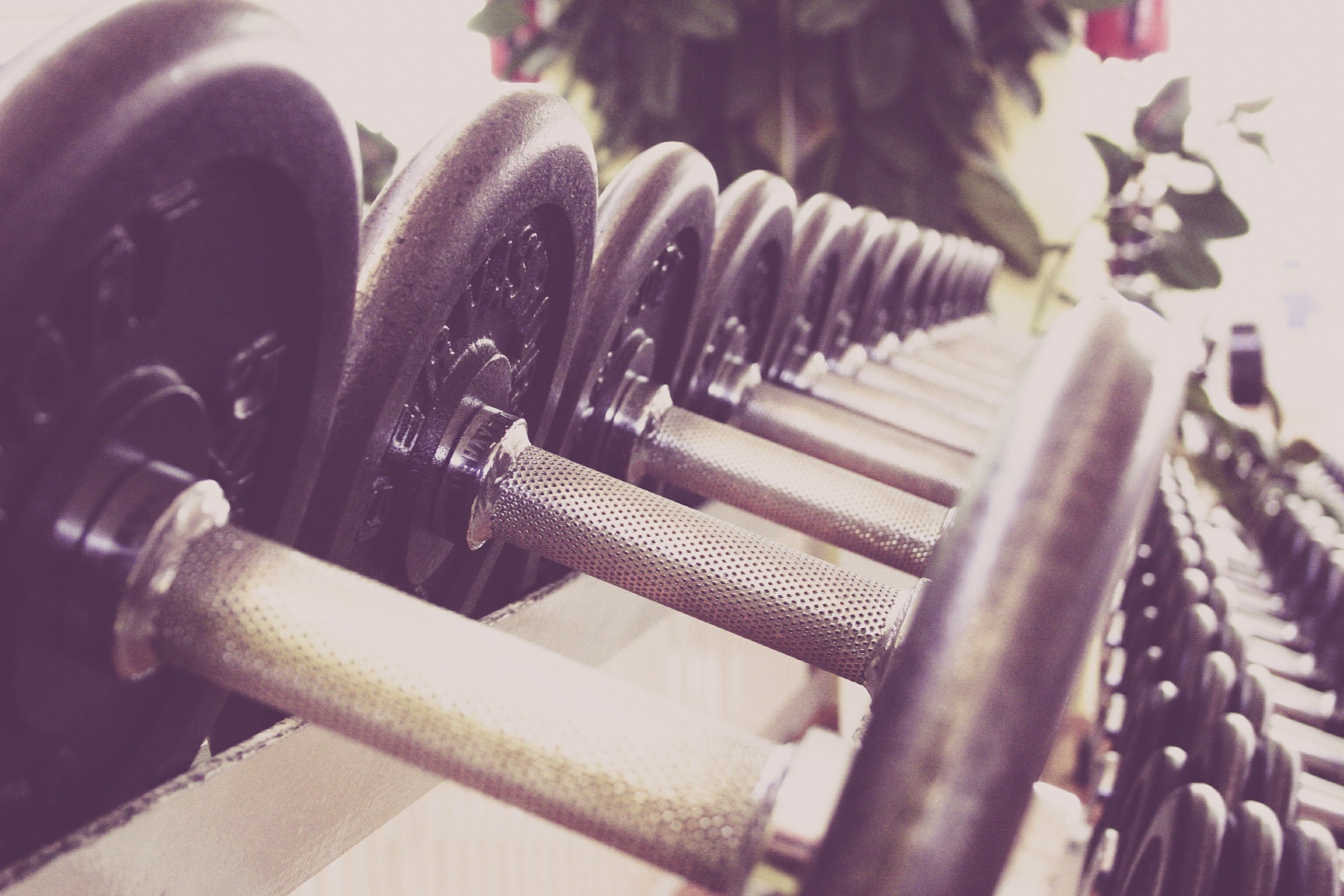I’ve been weight training for a few decades now, and in that time, I’ve learned several things that help me continue to improve my training. I didn’t come by this knowledge accidentally. I’ve worked with no less than 6 personal trainers, gone through 3 physical therapy protocols due to a few orthopedic surgeries, read countless books and articles, taken dozens of online courses, and tested everything through plain old trial and error. With all of that, there are 10 things I’ve learned that I still practice every time I walk into the gym.
Always have a plan…and a backup plan
I’ve been programming my own weight training sessions for years. Yes, I did deviate once or twice, most recently to work through 12 weeks of Mike Matthews Thinner, Leaner, Stronger training plan. The point is I always have a plan when I walk into the gym. A documented plan. In a book. I know what muscle groups I’m going to work on, what exercise I’m going to do to hit those body parts, and in what order. For any one of those exercises, I always have a backup plan in the event the free weight benches or weighted machines I typically use are already in use.
Always abs, and always abs first
I weight train three times a week. And after my warmup, I always start with abs. This is for three reasons. First, training my abs is not my favorite thing to do, but it is necessary. Second, because I don’t like them, I do them first to get them done and out of the way. Third, if I leave them until last, I will be completely out of gas and will neglect them altogether.
Each side is different
For many people, the strength they have in one arm, leg, etc., is greater than the strength of the other. For me, my right tricep is stronger than my left, yet my left bicep is stronger than my right. Due to the repeated decimation of my right leg muscles from numerous surgeries, this leg is less strong than my left. This happens, and this is normal. I also practice yoga at least twice a week the difference in my strength and balance between each side of my body is very evident. This is why it’s important to consider….
Free weights over machines (and when to use machines)
I much prefer free weights over machines. To be clear, when I use the term “free weights”, I mean dumbbells, bars, and plates. When I say “machines,” I mean lever or cable machines.
Referring back to the previous section, I have different degrees of strength in certain muscle groups. Free weight exercises isolate those muscles to help equalize the strength between the two. In the case of my triceps, I love tricep press-down exercises with a cable machine. The problem is I can feel my stronger right tricep doing most of the work. The solution? Doing single-arm tricep exercises with dumbbells to avoid having one arm compensate for the other.
Machines, although not my preference, do have a place in my weight training program for two primary reasons. The first reason is when it’s time to increase the weight of a particular exercise I’m doing with free weights. Most gyms have plates and dumbbells that increase in 5lb increments. Jumping from a 35lb dumbbell chest press to a 40lb dumbbell chest press might be too much. I could sacrifice form or risk injury, neither of which is good. So, I’ll move to a chest press machine to build that strength so I can safely move to a 40lb dumbbell.
The second reason is that there are some body parts for which there but a few free weight exercises available. This is the case for many back exercises. For this, I will use primarily use machines.
Lift more weight than you think
Hoping that many of my readers are primarily women over 50, I say this for you. Lift more weight than you think you can. You are far stronger than you think, weight training is paramount for your overall health, and you’re not going to turn into the Hulk by lifting heavy weights.
How much weight is heavy enough? A good rule of thumb is to lift enough to max out at 6 – 8 reps. That means by the time you get to your eighth rep, you should be pushing hard to eke out that last one with good form and little risk of injury. If you’re not doing that, the weight you are lifting isn’t heavy enough.
Go slow
Going slow means slowly moving the weight, whether you’re lifting or lowering or pushing and pulling. This is easily accomplished using a 4-count tempo. For example, if I’m doing a dumbbell chest press, I count 1 – 2 when pushing the weights up and 1 – 2 when bringing the weights back down.
Why is this important? Time under tension. Time under tension is the time a muscle is held under strain during an exercise. This forces your muscles to work harder and optimizes strength and growth.
When you’re whipping through an exercise quickly, you’re robbing yourself of the gains you could be getting if you took the appropriate amount of time to move the weight properly.
Use good form and full range of motion
Whether you use free weights or machines, using good form is critical for injury prevention when weight training. To learn good form (and get some validation on crappy form), do a YouTube search for the exercise. You’ll find dozens of examples.
When I first got involved in weight training, I stumbled across the ExRx.net Exercise Prescription on the Internet website. This website is not flashy by any means but is the single best (IMHO – authoritative) website on weight training out there. If you navigate over to the Exercise Libraries, you’ll find an exercise for every muscle group broken down by method (e.g., free weights, machines). More importantly, there are very short video clips of how to perform each exercise correctly.
Of equal importance to using good form is moving through full range of motion. Why? Working the muscle through full range of motion results in proper activation of the entire muscle and promotes better muscle balance, proper joint stabilization, and overall strength. If you use short movements, you’re not training the entire length of the muscle, and as a result, you sacrifice strength and joint mobility.
Using the dumbbell chest press example again, this means that when I’m pressing the weights up, my arms are fully extended at the top of the movement. When I’m lowering the weight, my arms come down, and my elbows drop below chest level.
If you find yourself sacrificing on form or range of motion, that could be a sign that you’re lifting a weight that’s too heavy for you. There’s no shame in backing down on weight in order to move it safely and properly.
Take long rests between sets
Resting between sets is necessary to allow the muscle time to regenerate the strength it needs to tackle the next set. But how much rest is adequate?
Again, hoping most of my readers are women over 50, your goal should be to gain strength. That being the case, you should be aiming for at least 2 minutes of rest between sets. Two minutes??? Yes. At minimum. I didn’t come by this guidance just by reading – I’ve practiced this and seen results.
When I first started weight training, I arbitrarily used one minute as my rest period between sets. It took months to see gains in my progress. Once I increased the rest time to 3 minutes, not only was I able to lift a heavier weight (because I had time between sets to recover), but I also saw quicker gains in my ability to move up in weight.
Some muscle groups will stick
This is the most frustrating part of weight training. You put in the time at the gym, yet for some muscle groups, you can never seem to progress in weight or strength. This can happen as a result of injury or using poor form, which was already mentioned above. And in some cases, some muscle groups just respond better that others.
For me, it’s my biceps, followed by my shoulders. In this scenario, I can absolutely say it’s because of degenerative disc disease in my neck. This isn’t to say that I can’t overcome this and improve the strength in these muscle groups; I absolutely can and have. It just means that I have to be diligent in how I approach exercising these muscles. This translates into using good form, employing appropriate time under tension, taking proper rest between sets, and practicing patience. The latter is the toughest.
If you look at my weight training logs, you’ll see I’ve been lifting the same amount of weight for dumbbell biceps curls, and lateral shoulder raises for months. Any time I try to go above, I sacrifice form. If this is you, be patient. After a period of time, you’ll notice the weight getting lighter on the last rep. That’s a sign your body has adapted and you’re ready to move up in weights.
You will hate some exercises
There are some exercises I absolutely hate. Do them anyway.
Aside from abs, as I mentioned above, I also hate lunges. Mostly because I feel uncoordinated doing them, and I still harbor fears of hurting my surgically repaired knee. But they’re good for my glutes, and once I learned the appropriate form and some modifications, I worried less about hurting myself.
I still hate them but did include them in my rotation for 8 weeks. Done and dusted. Now they’re off the books for my next 8-week rotation, and I can say that I conquered them.
Lunges aren’t the only exercise I hate but still do. In thinking about why I hate them, it’s because I’m just not good at them. Huh? How can you not be good at an exercise? For me, “not good” means not lifting as heavy as I know I can because I sacrifice form. See, weight training is a numbers game to me. I like lifting heavy shit and seeing how heavy I can lift. Just because I can pull 115lbs in a lat pulldown doesn’t mean my form is good. It isn’t. That’s why I’ve had to drop the weight back substantially and keep it there until I can safely jump it back up again.
Final Words
Weight training, by far, is my favorite form of exercise. Aside from the sense of power that comes with knowing I can lift heavy shit is also knowing that maintaining valuable muscle as I age will yield profound health benefits over time.
I continue to refine my weightlifting routines, incorporate newfound knowledge, and safely test the limits of my strength. But everything I practice and learn comes down to these 10 fundamentals.
Want to know more? Reach out to me. Weight training is the one thing I can talk about all day, and I’m happy to share what I know and what I practice.

